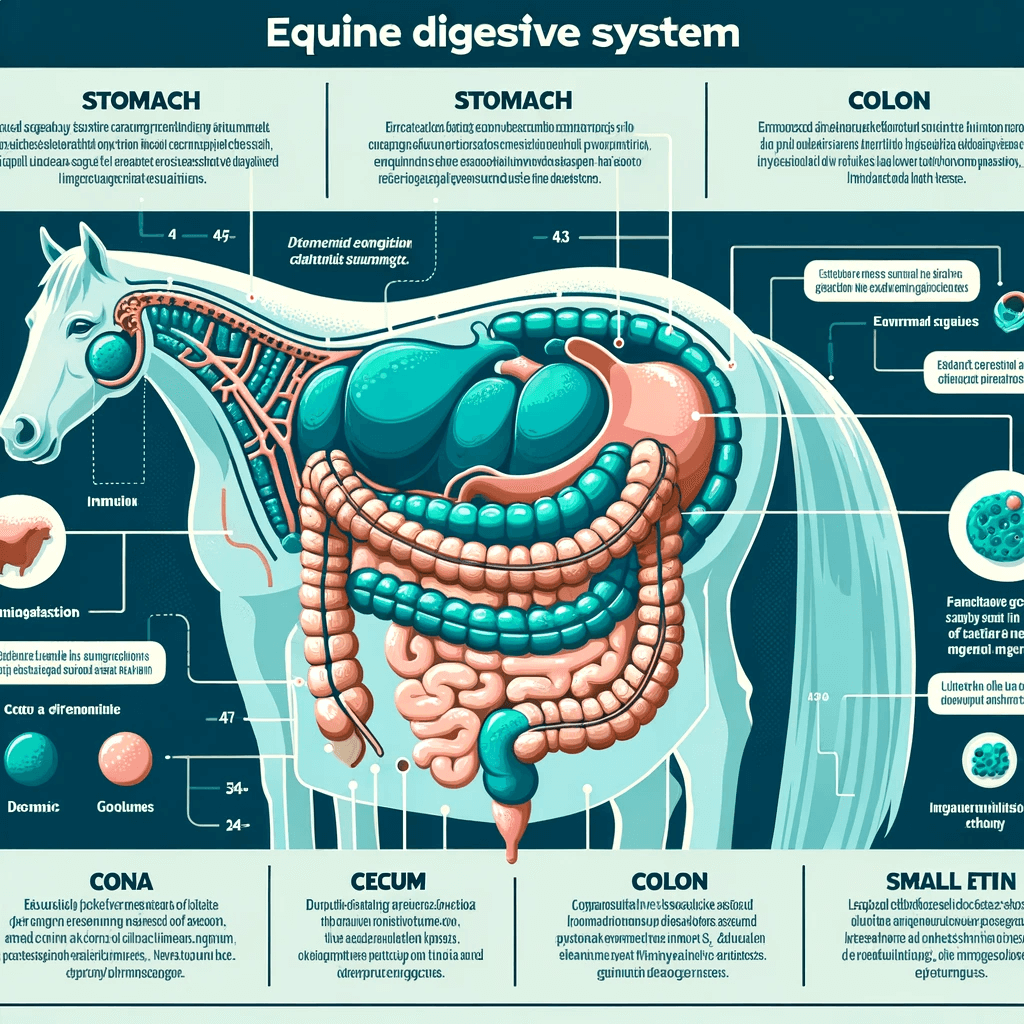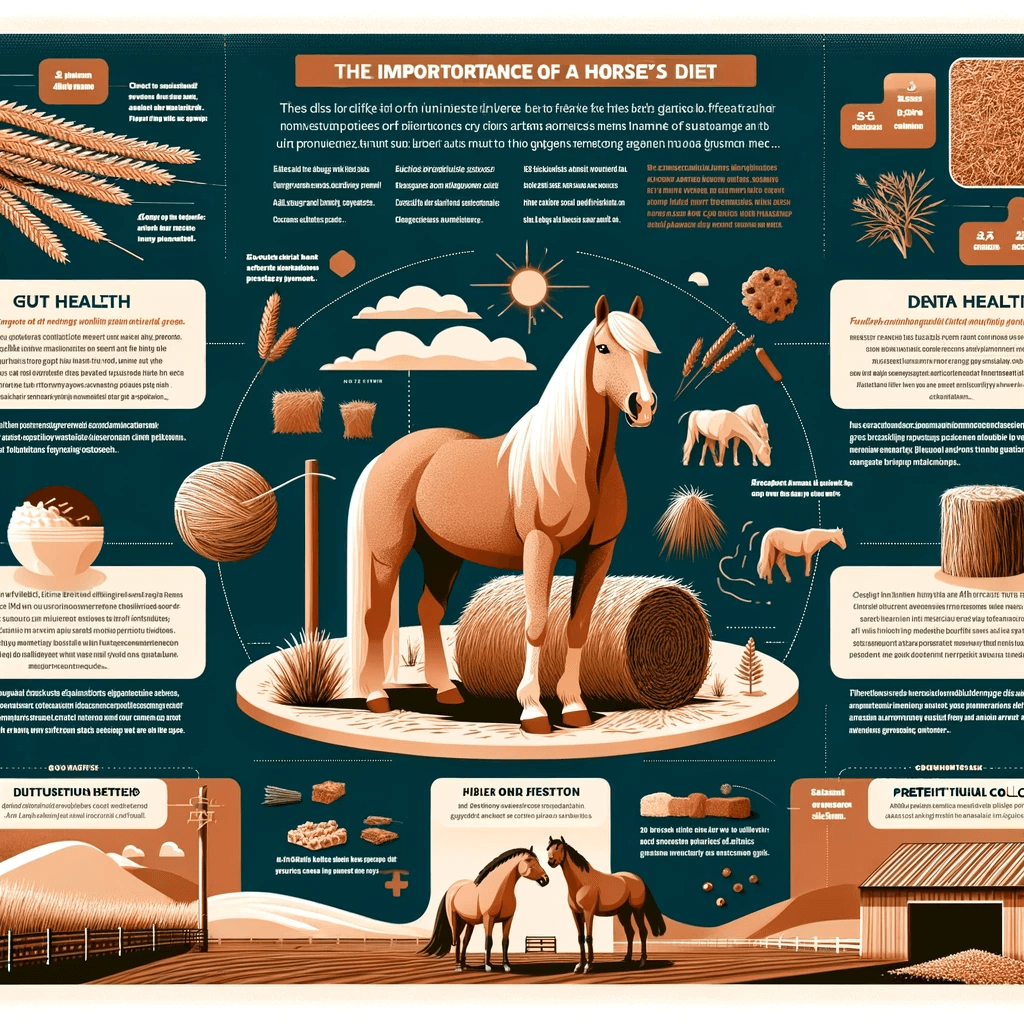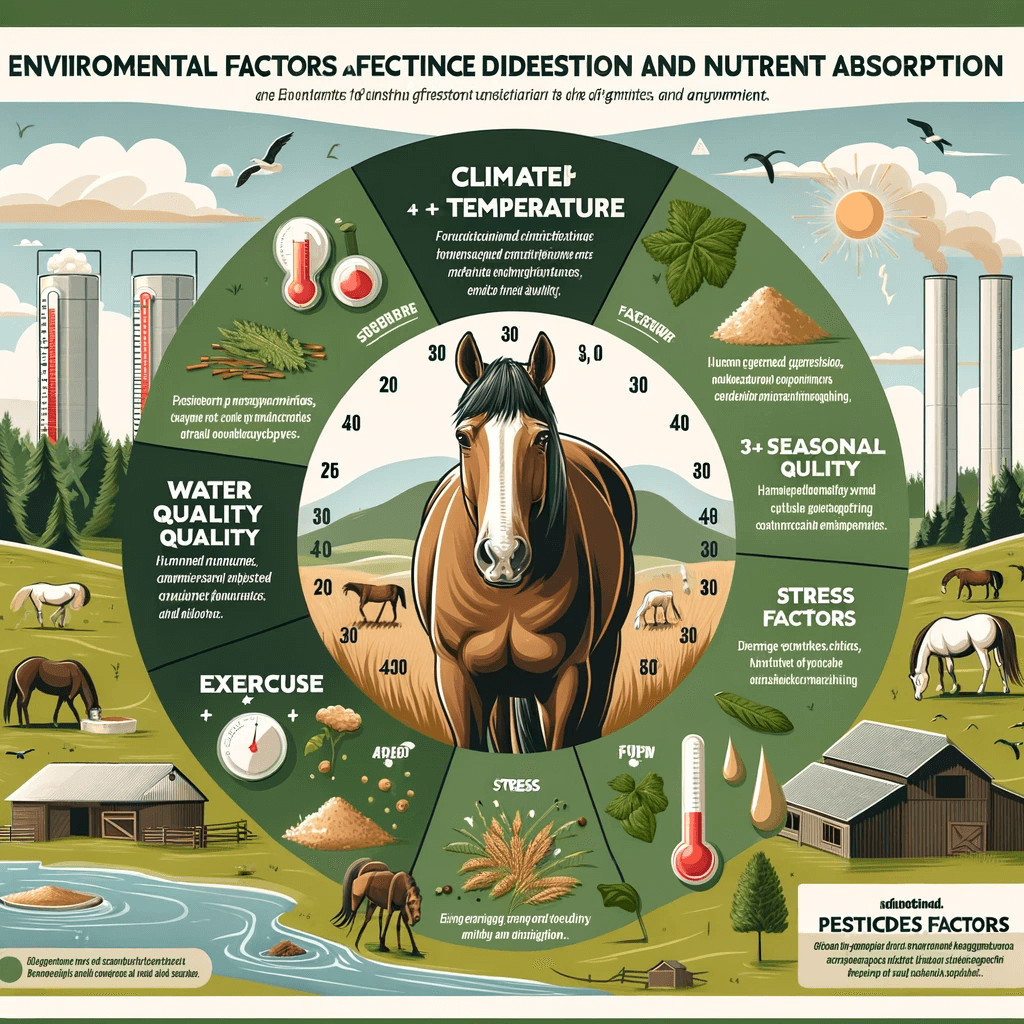Introduction
Horses are magnificent creatures known for their strength, speed, and grace. However, when it comes to understanding their biology and physiology, there are often misconceptions.
One common question that arises is whether horses are ruminants, like cows or sheep. To unravel this mystery, we need to delve into the intricate workings of the equine digestive system.
Read More: Strangles In Horses
Equine Digestive System Overview

The equine digestive system is a marvel of nature, finely tuned to the unique dietary requirements of horses. Comprising several distinct components, this system ensures the effective breakdown and absorption of nutrients from plant-based food sources.
Stomach Structure
Unlike ruminants, horses possess a single-chambered stomach. This structural difference significantly impacts how they process food.
Cecum and Colon
Within the equine digestive tract, the cecum and colon play vital roles in breaking down fibrous plant material through a process of fermentation, turning cellulose into digestible nutrients.
What Are Ruminants?
Ruminants are a group of mammals characterized by their complex stomachs, consisting of four compartments: the rumen, reticulum, omasum, and abomasum. This unique stomach structure enables them to efficiently digest plant matter through a process of regurgitation and re-chewing.
Ruminant Stomach Compartments
The four compartments of a ruminant’s stomach each have distinct functions, collectively allowing for the effective breakdown of cellulose-rich plant material.
Chewing Cud
One of the defining features of ruminants is their ability to regurgitate and re-chew their food, known as “chewing cud.” This process enhances the digestion of fibrous vegetation.
Read More: When Do Horses Stop Growing
Horses vs. Ruminants: Key Differences
When comparing horses to ruminants, it becomes evident that their digestive systems are fundamentally distinct. These differences have significant implications for their dietary needs and digestive processes.
Stomach Structure
Horses have a single-chambered stomach, similar to humans, whereas ruminants possess a four-chambered stomach. This variation affects how food is initially processed in their stomachs.
Regurgitation and Re-Chewing
Ruminants have the unique ability to regurgitate and re-chew their food, aiding in the breakdown of plant material. Horses lack this capability, relying on a different mechanism for digestion.
Cecum and Hindgut Fermentation
Horses rely on bacterial fermentation in their cecum and colon, located in the hindgut, to break down cellulose and extract nutrients. In contrast, ruminants primarily ferment food in the foregut compartments of their stomach.
Frequency of Feeding
Due to differences in their digestive systems, horses require more frequent feeding and access to forage to maintain their digestive health compared to ruminants, which can retain food in their multi-chambered stomachs for longer periods.
Read More: Why Do Horses Like Sugar Cubes
The Horse’s Stomach
In the horse’s digestive system, the stomach plays a crucial but relatively small role in the overall process. Unlike ruminants with their multi-chambered stomachs, horses possess a single-chambered stomach, much like humans.
Gastric Acid Secretion
The horse’s stomach continuously secretes gastric acid, which aids in the initial breakdown of food. However, the small size of the stomach and the constant acid secretion can lead to issues such as gastric ulcers if not managed properly.
The Role of the Cecum
The cecum is a significant component of the equine digestive system, located between the small and large intestines. It serves as a vital site for fermentation, where fibrous plant materials are broken down with the help of beneficial bacteria.
Fermentation Vat
The cecum functions as a fermentation vat, allowing horses to extract nutrients from fibrous plant material that would otherwise be indigestible. This process is essential for a horse’s ability to derive energy from cellulose.
Read More: What Temperature is Too Hot For Horses To Be Outside
Bacterial Fermentation in the Hindgut
One of the distinguishing features of the horse’s digestive system is the reliance on bacterial fermentation in the hindgut, which includes both the cecum and colon.
Microbial Digestion
Beneficial microorganisms in the hindgut play a crucial role in breaking down complex carbohydrates and cellulose. These bacteria assist in converting fibrous plant material into substances that the horse can absorb and utilize for energy.
Efficient Nutrient Extraction
Bacterial fermentation in the hindgut enables horses to extract a wide range of nutrients from their plant-based diet. This process highlights the horse’s adaptability to efficiently utilize the nutritional value of various forage sources.
The Importance of Fiber in a Horse’s Diet

Fiber holds a pivotal role in the diet of horses, contributing to their overall health and well-being. This essential nutrient primarily comes from forage sources such as hay and grass.
Promoting Gut Health
Fiber-rich forage stimulates gut motility, helping to prevent issues like colic and gastrointestinal discomfort. It encourages a steady flow of food through the digestive tract, aiding in proper digestion.
Dental Health
Chewing fibrous materials also supports dental health in horses. The abrasive action of grinding hay and grass helps maintain healthy teeth, allowing for effective food breakdown.
Read More: Gastric Ulcers In Horses
Horses’ Unique Dietary Needs
Horses possess distinct dietary requirements that set them apart from other animals, including ruminants. These needs are closely tied to their digestive system and feeding behaviors.
Frequent Feeding
Unlike ruminants that can store food in their multi-chambered stomachs, horses require frequent feeding throughout the day. Their small single-chambered stomach fills relatively quickly, necessitating regular access to forage.
Balanced Nutrients
Horses need a balanced diet that includes not only fiber but also essential nutrients like protein, vitamins, and minerals. Proper nutrition is crucial for maintaining their health, energy levels, and performance.
Read More: How Much Grain Does A Horse Eat Per Day
Can Horses Regurgitate Food?
One distinctive feature of ruminants like cows is their ability to regurgitate and re-chew their food, a process known as “chewing cud.” However, horses lack this capability due to their unique digestive system.
Non-Ruminant Status
Horses are classified as non-ruminant herbivores, which means they have a one-way digestive system. Food moves through their digestive tract in a continuous manner, without the ability to regurgitate and re-chew it.
Conclusion: Horses – Non-Ruminant Herbivores
In conclusion, horses are non-ruminant herbivores with a digestive system that differs significantly from ruminants like cows and sheep.
Understanding their unique dietary needs, reliance on fiber, and inability to regurgitate food is essential for providing proper care and nutrition to these magnificent animals. By tailoring their diet and management to their specific digestive system, we can ensure their health, vitality, and longevity.
Environmental Factors Affecting Equine Digestion and Nutrient Absorption

Climate and Temperature:
Extreme temperatures can affect a horse’s appetite and metabolism. In cold weather, horses may require more calories to maintain body heat, while in hot climates, they might eat less and require more hydration.
Forage Quality and Availability:
The type and quality of forage available to horses, which can vary with climate, season, and habitat, significantly impact their digestive health. Poor-quality forage may lead to nutrient deficiencies or digestive issues.
Water Quality and Access:
Clean, abundant water is essential for efficient digestion and nutrient absorption in horses. Contaminated or limited water sources can lead to dehydration and disrupt the digestive process.
Seasonal Changes:
Seasonal variations can affect the availability of natural forage, requiring adjustments in the horse’s diet. For example, in winter, horses may need supplementary feed to compensate for the lack of fresh grass.
Human-Managed Environments:
The conditions in stables, pastures, and other human-managed environments can impact a horse’s digestive health. Overcrowding, inadequate feeding practices, and lack of exercise can lead to stress and digestive issues.
Exercise and Activity Level:
Regular exercise is crucial for maintaining a healthy digestive system in horses. It stimulates gut motility and helps prevent colic and other digestive disorders.
Stress Factors:
Stress, whether from environmental changes, social dynamics, or management practices, can significantly impact a horse’s digestive health, potentially leading to issues like ulcers or colic.
Pesticides and Chemicals:
Exposure to pesticides and chemicals in the environment, either through grazing or contaminated feed, can affect a horse’s digestive efficiency and overall health.
FAQs:
Can horses eat the same food as cows or sheep?
No, horses have different dietary needs and cannot eat the same food as cows or sheep. They require a diet rich in forage, while cows and sheep are ruminants and can digest fibrous plant material more efficiently.
Do horses have a rumen like cows?
No, horses do not have a rumen. They have a single-chambered stomach and rely on bacterial fermentation in their hindgut, particularly the cecum and colon, to digest fibrous plant material.
How often should horses be fed?
Horses should have access to forage, such as hay or pasture, consistently throughout the day. They are grazing animals and should not be without food for extended periods to maintain their digestive health.
Can horses vomit?
No, horses cannot vomit. Their digestive system is one-way, and they lack the ability to regurgitate and re-chew food like ruminants.
What is the importance of roughage in a horse’s diet?
Roughage, such as hay and grass, is essential in a horse’s diet as it provides fiber necessary for gut motility, aids in maintaining dental health, and supports the microbial fermentation process in the hindgut.
